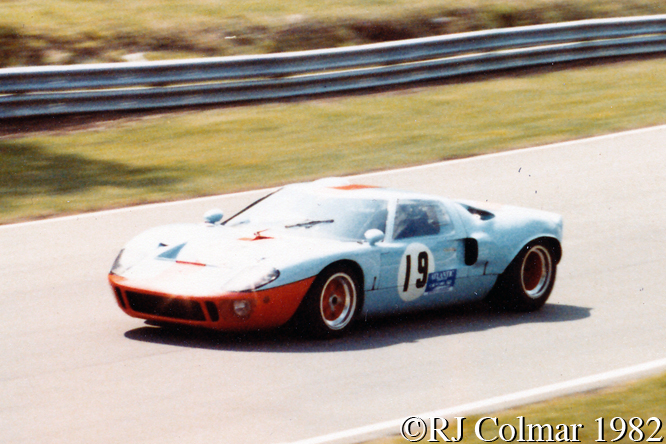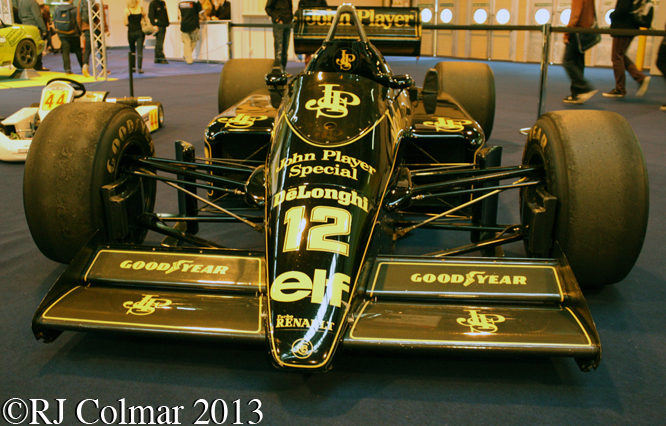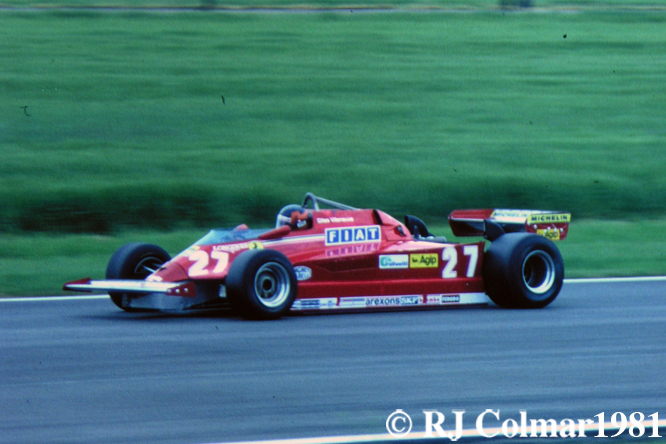So far as I have been able to discern the chassis numbers for the production Ford GT40 Mk1 ran from P/1000 to P/1086, suggesting at least 87 production GT40 Mk1’s were built at Ford Advanced Vehicle facility in Slough, though as we shall see things are not always quite so simple.

Today’s featured car is a case in point, known as #P/1084 it has the highest chassis number of those known to have raced in period, though chassis P/1071 did not make it’s race debut until 14 month’s after #P/1084 appeared at Spa in May 1968 with Paul Hawkins and David Hobbs at the wheel.
However it turns out that #P/1084 started life as #P/1004 in 1965, a car that was entered into the 1965 Le Mans 24 hours by RRC Walker Racing and Shelby American for Bob Bondurant and Umberto Maglioli, this car running the #7 qualified third but retired with a leaking head gasket on lap 29, coincidentally the same lap as it’s sister #P/1005 driven by Ronnie Buckum and Herbert Müller retired with the same problem. #GT40 P/1004 then appears to have gone on Carrol Shelby’s promotional tour of America known as the Cobra Caravan.
When the JW Automotive Gulf team, operating from the same factory as Ford Advanced Vehicles had in Slough, needed a car for the 1968 Spa 1000kms they found they were a car short and so they rebuilt #P/1004 to 1968 specification and gave it a ‘new’ GT40 P/1084 identification although the factory records refer to the chassis entered at Spa where Hawkins and Hobbs finished 4th by it’s old number.
Some sources believe that #P/1084 was then shipped, by JW Automotive, to Watkins Glen two month’s later where Hawkins and Hobbs finished 2nd however I believe this is a typo, GT40 über authority Ronnie Spain identifies the car that Hawkins and Hobbs drove at Watkins Glen as GT40 P/1074.
During the 1970’s P/1084 was raced by Paul Wheldon for owner Connaught Engineering founder Rodney Clarke. Martin Colville seen in the #P/1084 here at Brands Hatch in July 1982 where Martin was taking part in a support race on the British Grand Prix weekend bought the car in 1981 and had a bubble fitted to the upper part of the drivers door to accommodated his frame.
Subject to revisions in Ronnie Spain’s much anticipated second edition bible on the subject “GT40: An Individual History and Race Record” this is my best understanding of the car known as #GT40 P/1084. If you know different please do not hesitate to chip in below.
My thanks to David McKinney, Pete Taylor and Ron54 at The Nostalgia Forum for their help in yet another carceology adventure.
Thanks for joining me on this “Cobra Caravan Itinerant” edition of “Gettin’ a li’l psycho on tyres” I hope you will join me again for Ferrari Friday tomorrow. Don’t forget to come back now !








